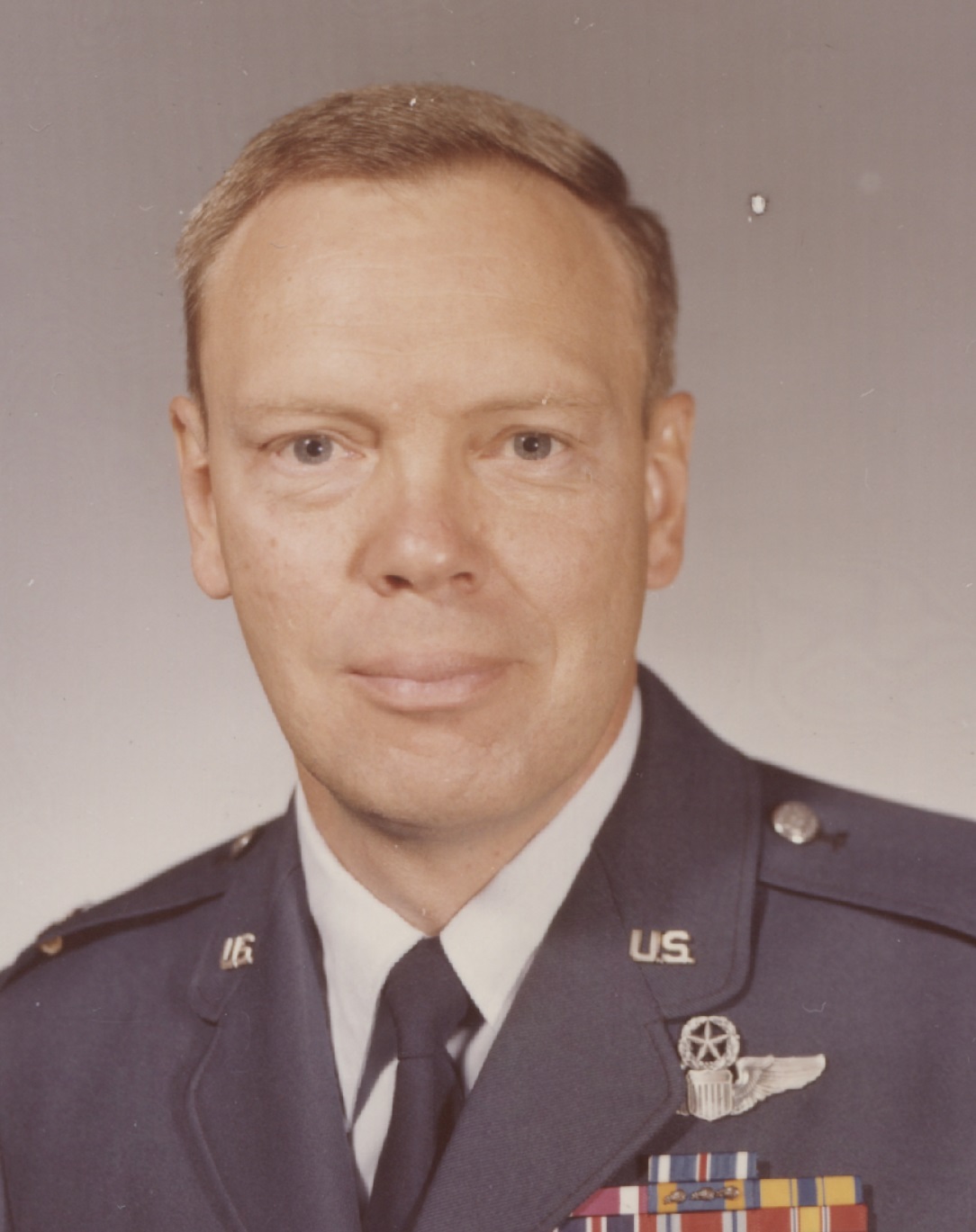Home Index
 Colonel
Colonel
John T. May
Permanent Professor 1980–1987
Vice Dean of the Faculty 1984–1986
Acting Dean of the Faculty 1986–1987
B.S., United States Air Force Academy
M.S., North Carolina State University
Ph.D., North Carolina State University
John May, the Academy’s 36th Permanent Professor, was born in 1939 in Philadelphia, Pennsylvania. He graduated with the United States Air Force Academy’s third class in 1961. He attended pilot training at Reese AFB, TX, earning his wings in 1962. He then began flying C-130s, an aircraft in which he eventually accumulated more than 5,000 hours, with three commands—Military Airlift Command, Air Force Aerospace Recovery and Rescue Service, and Air Force Systems Command. After pilot training, he served with the 41st Air Transport Squadron at Charleston AFB, SC, as a Pilot and Instructor Pilot. In 1967 he was assigned to the 39th Aerospace Recovery and Rescue Squadron at Tuy Hoa Air Base, Vietnam, where he was a Pilot and Instructor Pilot in the HC-130P, performing air-to-air refueling with HH-3 and HH-53 rescue helicopters, and coordinating rescue efforts for downed aircrew. After two years of graduate school at North Carolina State University, John earned his Master’s degree in Physics in 1970 and was assigned to teach as a Physics Instructor at the Air Force Academy. He returned to North Carolina State in 1972, earned his PhD in Physics two years later, and then taught at the Academy as an Associate Professor of Physics. In 1976 he again resumed flying the C-130, this time with the 6594th Test Group at Hickam AFB, HI. He held the position of Chief of Standardization/Evaluation, and conducted flight testing of a heads-up display for aerial recovery of parachute suspended objects; he was the pilot on the first operational use of this system. After leaving Hawaii in 1979, he was assigned to the Air Force Office of Scientific Research in Washington, DC, where he was the manager for Air Force basic research in pulsed power, plasma physics, and particle beams. John once again was assigned to the Academy faculty with his appointment as Permanent Professor and Head of the Department of Physics, 1980–1984. During his tenure, he initiated several long-lasting innovations. He established a computer learning laboratory, where his faculty developed computer-delivered problems for review and testing, computer simulations for classroom use, and a computer-based gradebook. The latter was such a boon to record keeping that it was adopted faculty-wide. He formed a faculty laser group for theoretical and experimental research through joint efforts with the Frank J. Seiler Research Laboratory and the Air Force Weapons Laboratory. He modernized the Atmospheric Science Program to emphasize ionospheric research and solar-planetary interactions, and he introduced the Physics major’s track in Space Physics. He also improved community outreach through the “Physics is Phun” program to encourage science curiosity in children through exciting demonstrations in local elementary schools. He served as Officer Representative for the men’s basketball team. John was the Vice Dean of the Faculty, 1984–1986, and the Acting Dean for the Academic Year 1986–1987. In these roles he provided the justifying rationale for the use of networked computers in education, which helped bring about the Academy’s first-in-the-world campus-wide networked computers in 1986. He retired in 1987.
From 1987 to 1988 John was a Visiting Professor of Physics at North Carolina State University, Raleigh. In 1988 he joined the Atlantic Community College in Mays Landing, NJ, serving as the Academic Dean, 1988–1993, and then became the college’s President. Under his leadership, the college was expanded and renamed Atlantic Cape Community College; he retired as President of the college in 2005.